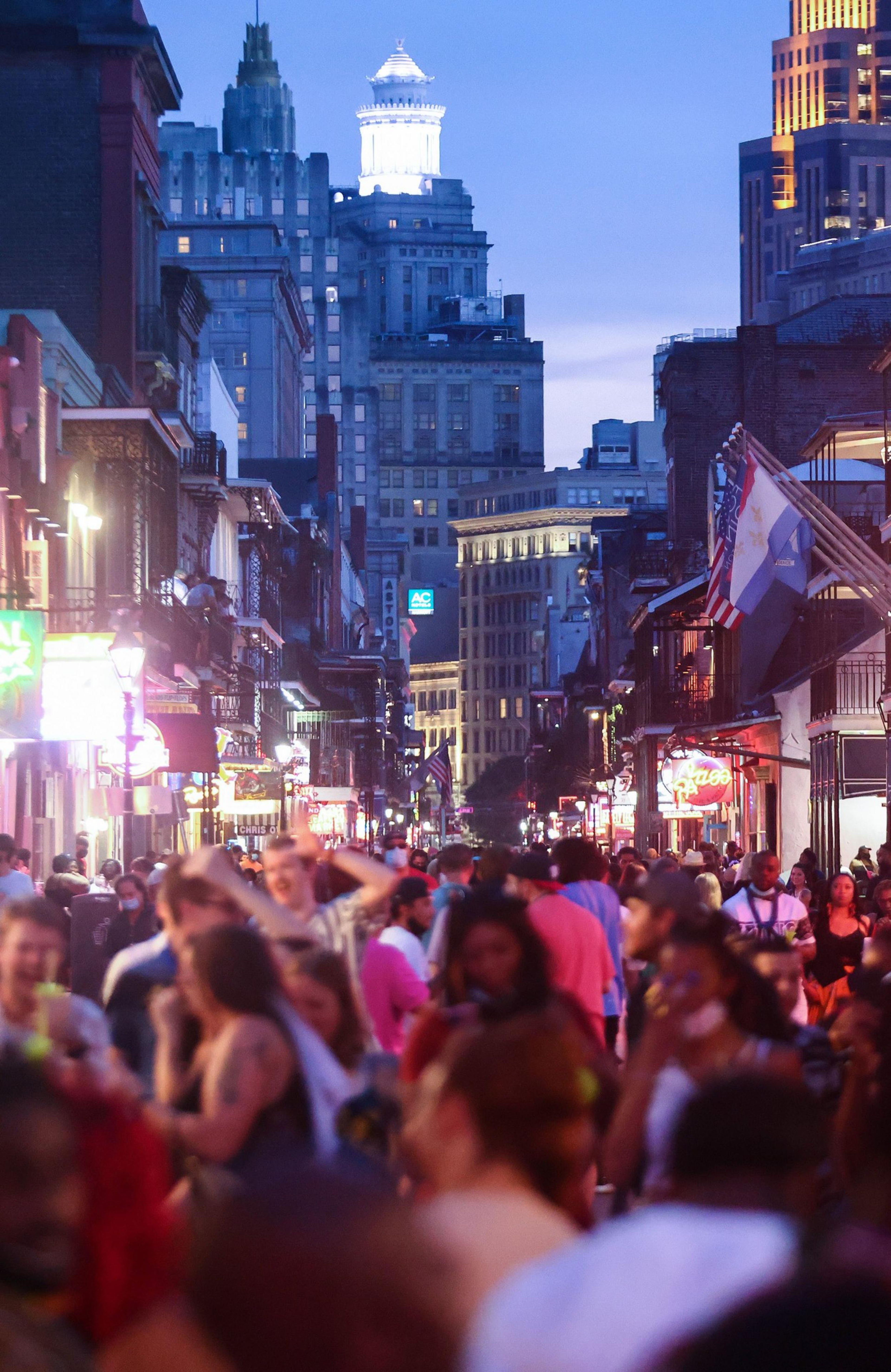San Francisco doesn’t have an equivalent to Bourbon Street or the Las Vegas Strip, where throngs of drunken revelers clutch colorful frozen cocktails on public streets.
But a new proposal by Mayor London Breed would create the city’s—and the state’s—first “entertainment zone,” allowing restaurants and bars to sell alcoholic beverages for consumption outdoors.
Breed’s office is pitching the inaugural zone in the Financial District on Front Street between California and Sacramento streets, a block populated by Royal Exchange, Harrington’s Bar and Grill, and Schroeder’s.
However, in typical San Francisco fashion, the fun is subject to a bevy of rules and regulations.
For one, the city first has to introduce and pass legislation to establish a framework that defines and allows the designation of entertainment zones. The ordinance would also have to revise local open container laws to make the outdoor drinking zone legal.
Additionally, the zone would only be active during outdoor events specifically permitted by the California Department of Alcoholic Beverage Control.
Although the ABC permits outdoor events to serve alcohol, outside vendors typically provide these services, meaning existing businesses don’t get much benefit from those events.
Entertainment zones were enabled by Senate Bill 76, a law spearheaded by state Sen. Scott Wiener, which allows cities to create temporary areas where brick-and-mortar bars and restaurants can sell alcohol to-go, providing them with a competitive advantage similar to that of licensed vendors at festivals.
“San Francisco’s Downtown is seeing a new surge of excitement, and we are thrilled to be the first city in California to take advantage of this new law to bring opportunities that foster joy for our residents, workers and visitors,” Breed said in a statement. “Our message is clear: San Francisco is having fun, thriving and open for business.”
With the shift to hybrid work, city leaders have banked hard on turning downtown into a destination for arts and culture. Although several bars have opened or reopened over the last year, the area still suffers from a dearth of late-night activities.
New programs introduced in recent months include Downtown First Thursdays, a monthly all-ages party organized by the nonprofit Into the Streets on Second Street between Market and Folsom streets.
Breed is also directing the Office of Economic and Workforce Development to partner with the nonprofit SF New Deal to launch a $500,000 program offering up to 20 grants to fund economic revitalization projects related to nightlife or entertainment downtown.
These could include new live performances at downtown venues, the establishment of additional entertainment zones or new food and music festivals.
“Downtown San Francisco needs a nightlife renaissance post-pandemic. Launching California’s first ever entertainment zone on Front Street is significant and will catalyze more reasons to come downtown,” Robbie Silver, executive director of the Downtown SF Partnership, said in a statement.
